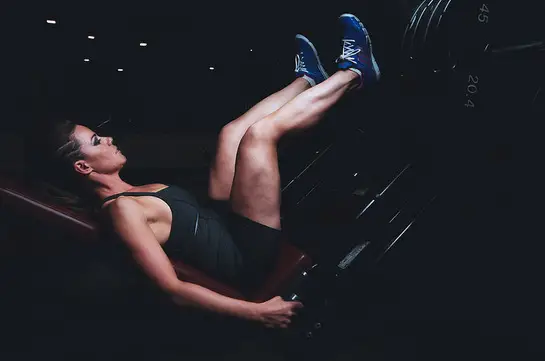Conventional wisdom in the exercise world is that you should lift heavier weights if you want to get bigger muscles. This may cause some personal trainers and strength coaches to emphasize higher loads of training for clients and athletes who want or need to increase muscle size.
However, a 2012 research that was published in the Journal of Applied Physiology questioned that notion. Kinesiology researcher Stuart M. Phillips, from McMaster University, and his team stated that there is very little evidence that heavier loads can induce higher muscle hypertrophy than lighter loads.
The researchers recruited 18 young men who had no formal weight training experience and did not train regularly for about a year. Each man were randomly assigned to one of three training protocols using a leg extension machine: 1 set of 80% of 1 rep max (RM), 3 sets of 80% of 1RM, and 3 sets of 30% of 1RM. The subjects trained three times a week for 10 weeks and performed the exercise until failure.
Given that everyone consumed the same amount of post-workout meals immediately after the training session, the researcher found that there were not much differences in muscle hypertrophy in the quadriceps in all three groups:
“After 10 wk of training, the quadriceps muscle volume increased significantly in all groups (P < 0.001) to 1,676 ± 198, 1,651 ± 213, and 1,633 ± 198 cm^3 in the 30%-3, 80%-1, and 80%-3 groups, respectively.”
While all groups showed muscle growth, no one method is superior than the other in this study.
So what does this mean for clients?
While this study has a tiny sample size and does not represent the general population, it is worth exploring whether this can be applied to most women, elderly adults, and rehab patients. Clients who are new to strength training or are recovering from physical rehab may lack the confidence or ability to lift heavy weights. If one of their goals is to increase muscle definition or size, give them the option of lifting heavier or lighter to failure.
Now that does not mean your clients should just stick with light weights that you often see in fitness advertisements and stock photos. The amount of weight they should use would vary per individual, but it should still be challenging enough to make them grunt or sweat a bit. If your clients want to go heavy at about 70% to 80% 1RM, go for it.
Remember that your clients’ goals are more important than your own preferred training methodology. Adapt to your clients.
Reference
1. Mitchell CJ, Churchward-Venne TA, West DW, et al. Resistance exercise load does not determine training-mediated hypertrophic gains in young men. J Appl Physiol (1985). 2012;113(1):71–77. doi:10.1152/japplphysiol.00307.2012
A native of San Diego for nearly 40 years, Nick Ng is an editor of Massage & Fitness Magazine, an online publication for manual therapists and the public who want to explore the science behind touch, pain, and exercise, and how to apply that in their hands-on practice or daily lives.
An alumni from San Diego State University with a B.A. in Graphic Communications, Nick also completed his massage therapy training at International Professional School of Bodywork in San Diego in 2014.
When he is not writing or reading, you would likely find him weightlifting at the gym, salsa dancing, or exploring new areas to walk and eat around Southern California.





